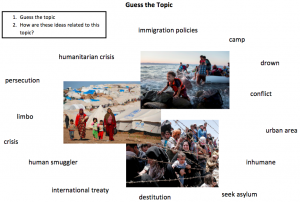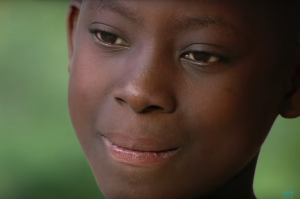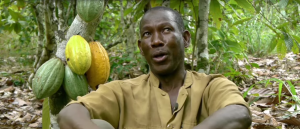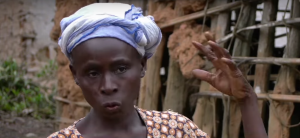Learning Outcomes
By the end of this 2-hour lesson, the Ss will:
- have practised listening to a lecture and noting down the main points made
- have created a Situation-Problem-Solution-Evaluation (SPSE) video presentation in a group, using a visual aid and accurate signposting language
| Time | Stage | Procedure |
| Pre-lesson tasks
· Topic and vocab · Listening and note-taking |
· In the lesson prior to this one, ask Ss to look at their Guess the Topic h/o and discuss in buzz groups (pairs) what the topic might be and how each of the words might be related to it. F/b · Hand out the Our Refugee System is Failing w/s. In small groups, Ss discuss Q1. · For homework, ask Ss to watch the TED talk and make notes on questions 2-5. Hand out the Our Refugee System is Failing Transcript and ask Ss to check their answers to questions 2-4 after they have listened to the video and made notes on it. They should come to the next class ready to discuss their notes with others. (The rationale for the use of the flipped classroom model here is to give the students an opportunity in their own time to absorb and reflect on the issues presented in the talk, which should lead to a deeper level of critical thinking later) |
|
| 0’-15’ | 1. Checking understanding of TED talk |
· Go through learning outcomes on board. · As a warmer, elicit their opinions about Task 5a – why is this an important topic to discuss? F/b · In groups of 3/4, ask Ss to compare notes that they made at home on questions 2-4 (but not yet 5) of their Our Refugee System is Failing w/s, justifying their answers, where necessary, by referring to the Our Refugee System is Failing Transcript. F/b |
| 15’-1hr30’ | 2. Planning and Delivering a Videoed SPSE Presentation |
· Say that they will shortly be sharing their answers to Task 5 with their group . Before they do so, give out the Fixing the Refugee System: Group Video Task h/o. Ss read the instructions and tutor checks understanding of task. · Ss follow the procedure below (and the tutor can set the online countdown timer to maintain strict timings for each stage): · Task 1 – Brainstorm and evaluate ideas (20 minutes): o Discuss, agree and note down the situation and problem (from the video) and suggest their own solutions to this problem (referring to Task 5b-d from their homework sheet) o Note down evaluations to these suggested solutions · Task 2 – Plan their presentation (20 minutes): o Write their ideas up clearly onto a visual aid using coloured paper and pens (e.g. each section can be on one sheet of A4 paper) o Decide what signposting language they will use o Decide who will say what in the presentation · Task 3 – Rehearse their presentation (20 minutes): o Practise delivering and videoing their presentation (on their mobile phones) o Watch the video back and analyse their (and their peers’) performance, identifying elements to be improved. The tutor can offer formative feedback at this point too o Repeat this process as many times as necessary · Task 4 – Video their presentation (20 minutes) o this may take a few attempts. Ss can spread out into different classrooms to do this, if required. Tutor can circulate, noting down language errors o when they have videoed it, they can upload it to the VLE or email it to the teacher |
| 1hr30’-2hrs | 3. Feedback on Videos and Error Correction |
· Ss watch the videos as a class and then vote on the best solution, giving the reason why they chose it. N.B if there is not time to do this in class, Ss can access these videos on the VLE at home and then cast their votes in the following class · Conduct error correction on board |
Guess the Topic
Our Refugee System Is Failing. Here’s How We Can Fix It (TED Talk by Alexander Betts)
- Look at the title of this TED talk. What is it about and how do you think it will be structured?
- Listen to 0:11-0:28 of the talk. How does the speaker feel about being a European?
- Why do you think he feels like this? Listen to 0:11-3:55 and note down the reasons he gives
- What choices face refugees regarding where to go? Listen to 3:55-7:57 and note down the choices he talks about
- After you’ve watched the video (to 7:57), reflect on the following questions:
a) Do you think this is an important topic to discuss? Why?
b) What is the situation and the main problems that he talks about?
c) What possible solutions to these problems can you think of? (write your own ideas here)
Fixing the Refugee System: Group Video Task
|
|
Transcript of the video
0:11 There are times when I feel really quite ashamed to be a European. In the last year, more than a million people arrived in Europe in need of our help, and our response, frankly, has been pathetic.
0:28 There are just so many contradictions:
- We mourn the tragic death of two-year-old Alan Kurdi, and yet, since then, more than 200 children have subsequently drowned in the Mediterranean.
- We have international treaties that recognize that refugees are a shared responsibility, and yet we accept that tiny Lebanon hosts more Syrians than the whole of Europe combined.
- We lament the existence of human smugglers, and yet we make that the only viable route to seek asylum in Europe.
- We have labour shortages, and yet we exclude people who fit our economic and demographic needs from coming to Europe.
- We proclaim our liberal values in opposition to fundamentalist Islam, and yet — we have repressive policies that detain child asylum seekers, that separate children from their families, and that seize property from refugees.
1:39 What are we doing? How has the situation come to this, that we’ve adopted such an inhumane response to a humanitarian crisis?
1:50 I don’t believe it’s because people don’t care, or at least I don’t want to believe it’s because people don’t care. I believe it’s because our politicians lack a vision, a vision for how to adapt an international refugee system created over 50 years ago for a changing and globalized world. And so what I want to do is take a step back and ask two really fundamental questions, the two questions we all need to ask. First, why is the current system not working? And second, what can we do to fix it?
2:25 So the modern refugee regime was created in the aftermath of the Second World War by these guys. Its basic aim is to ensure that when a state fails, or worse, turns against its own people, people have somewhere to go, to live in safety and dignity until they can go home. It was created precisely for situations like the situation we see in Syria today. Through an international convention signed by 147 governments, the 1951 Convention on the Status of Refugees, and an international organization, UNHCR, states committed to reciprocally admit people onto their territory who flee conflict and persecution.
3:10 But today, that system is failing. In theory, refugees have a right to seek asylum. In practice, our immigration policies block the path to safety. In theory, refugees have a right to a pathway to integration, or return to the country they’ve come from. But in practice, they get stuck in almost indefinite limbo. In theory, refugees are a shared global responsibility. In practice, geography means that countries proximate the conflict take the overwhelming majority of the world’s refugees. The system isn’t broken because the rules are wrong. It’s that we’re not applying them adequately to a changing world, and that’s what we need to reconsider.
3:55 So I want to explain to you a little bit about how the current system works. How does the refugee regime actually work? But not from a top-down institutional perspective, rather from the perspective of a refugee. So imagine a Syrian woman. Let’s call her Amira. And Amira to me represents many of the people I’ve met in the region. Amira, like around 25 percent of the world’s refugees, is a woman with children, and she can’t go home because she comes from this city that you see before you, Homs, a once beautiful and historic city now under rubble. And so Amira can’t go back there. But Amira also has no hope of resettlement to a third country, because that’s a lottery ticket only available to less than one percent of the world’s refugees.
4:45 So Amira and her family face an almost impossible choice. They have three basic options. The first option is that Amira can take her family to a camp. In the camp, she might get assistance, but there are very few prospects for Amira and her family. Camps are in bleak, arid locations, often in the desert. In the Zaatari refugee camp in Jordan, you can hear the shells across the border in Syria at night time. There’s restricted economic activity. Education is often of poor quality. And around the world, some 80 percent of refugees who are in camps have to stay for at least five years. It’s a miserable existence, and that’s probably why, in reality, only nine percent of Syrians choose that option.
5:40 Alternatively, Amira can head to an urban area in a neighbouring country, like Amman or Beirut. That’s an option that about 75 percent of Syrian refugees have taken. But there, there’s great difficulty as well. Refugees in such urban areas don’t usually have the right to work. They don’t usually get significant access to assistance. And so when Amira and her family have used up their basic savings, they’re left with very little and likely to face urban destitution.
6:13 So there’s a third alternative, and it’s one that increasing numbers of Syrians are taking. Amira can seek some hope for her family by risking their lives on a dangerous and perilous journey to another country, and it’s that which we’re seeing in Europe today.
6:34 Around the world, we present refugees with an almost impossible choice between three options: encampment, urban destitution and dangerous journeys. For refugees, that choice is the global refugee regime today. But I think it’s a false choice. I think we can reconsider that choice. The reason why we limit those options is because we think that those are the only options that are available to refugees, and they’re not. Politicians frame the issue as a zero-sum issue, that if we benefit refugees, we’re imposing costs on citizens. We tend to have a collective assumption that refugees are an inevitable cost or burden to society. But they don’t have to. They can contribute.
7:57 The first one I want to think about is the idea of enabling environments, and it starts from a very basic recognition that refugees are human beings like everyone else, but they’re just in extraordinary circumstances. Together with my colleagues in Oxford, we’ve embarked on a research project in Uganda looking at the economic lives of refugees. We chose Uganda not because it’s representative of all host countries. It’s not. It’s exceptional. Unlike most host countries around the world, what Uganda has done is give refugees economic opportunity. It gives them the right to work. It gives them freedom of movement. And the results of that are extraordinary both for refugees and the host community. In the capital city, Kampala, we found that 21 percent of refugees own a business that employs other people, and 40 percent of those employees are nationals of the host country. In other words, refugees are making jobs for citizens of the host country. Even in the camps, we found extraordinary examples of vibrant, flourishing and entrepreneurial businesses.7:25 So what I want to argue is there are ways in which we can expand that choice set and still benefit everyone else: the host states and communities, our societies and refugees themselves. And I want to suggest four ways we can transform the paradigm of how we think about refugees. All four ways have one thing in common: they’re all ways in which we take the opportunities of globalization, mobility and markets, and update the way we think about the refugee issue.
9:06 For example, in a settlement called Nakivale, we found examples of Congolese refugees running digital music exchange businesses. We found a Rwandan who runs a business that’s available to allow the youth to play computer games on recycled games consoles and recycled televisions. Against the odds of extreme constraint, refugees are innovating, and the gentleman you see before you is a Congolese guy called Demou-Kay. Demou-Kay arrived in the settlement with very little, but he wanted to be a filmmaker. So with friends and colleagues, he started a community radio station, he rented a video camera, and he’s now making films. He made two documentary films with and for our team, and he’s making a successful business out of very little. It’s those kinds of examples that should guide our response to refugees. Rather than seeing refugees as inevitably dependent upon humanitarian assistance, we need to provide them with opportunities for human flourishing.
10:11 Yes, clothes, blankets, shelter, food are all important in the emergency phase, but we need to also look beyond that. We need to provide opportunities to connectivity, electricity, education, the
10:38 The second idea I want to discuss is economic zones. Unfortunately, not every host country in the world takes the approach Uganda has taken. Most host countries don’t open up their economies to refugees in the same way. But there are still pragmatic alternative options that we can use.right to work, access to capital and banking. All the ways in which we take for granted that we are plugged in to the global economy can and should apply to refugees.
10:58 Last April, I travelled to Jordan with my colleague, the development economist Paul Collier, and we brainstormed an idea while we were there with the international community and the government, an idea to bring jobs to Syrians while supporting Jordan’s national development strategy. The idea is for an economic zone, one in which we could potentially integrate the employment of refugees alongside the employment of Jordanian host nationals. And just 15 minutes away from the Zaatari refugee camp, home to 83,000 refugees, is an existing economic zone called the King Hussein Bin Talal Development Area. The government has spent over a hundred million dollars connecting it to the electricity grid, connecting it to the road network, but it lacked two things: access to labour and inward investment. So what if refugees were able to work there rather than being stuck in camps, able to support their families and develop skills through vocational training before they go back to Syria? We recognized that that could benefit Jordan, whose development strategy requires it to make the leap as a middle income country to manufacturing. It could benefit refugees, but it could also contribute to the post-conflict reconstruction of Syria by recognizing that we need to incubate refugees as the best source of eventually rebuilding Syria.
12:19 We published the idea in the journal Foreign Affairs. King Abdullah has picked up on the idea. It was announced at the London Syria Conference two weeks ago, and a pilot will begin in the summer.
12:31 (Applause)
12:36 The third idea that I want to put to you is preference matching between states and refugees to lead to the kinds of happy outcomes you see here in the selfie featuring Angela Merkel and a Syrian refugee. What we rarely do is ask refugees what they want, where they want to go, but I’d argue we can do that and still make everyone better off. The economist Alvin Roth has developed the idea of matching markets, ways in which the preference ranking of the parties shapes an eventual match. My colleagues Will Jones and Alex Teytelboym have explored ways in which that idea could be applied to refugees, to ask refugees to rank their preferred destinations, but also allow states to rank the types of refugees they want on skills criteria or language criteria and allow those to match. Now, of course you’d need to build in quotas on things like diversity and vulnerability, but it’s a way of increasing the possibilities of matching. The matching idea has been successfully used to match, for instance, students with university places, to match kidney donors with patients, and it underlies the kind of algorithms that exist on dating websites. So why not apply that to give refugees greater choice?
13:54 It could also be used at the national level, where one of the great challenges we face is to persuade local communities to accept refugees. And at the moment, in my country, for instance, we often send engineers to rural areas and farmers to the cities, which makes no sense at all. So matching markets offer a potential way to bring those preferences together and listen to the needs and demands of the populations that host and the refugees themselves.
14:21 The fourth idea I want to put to you is of humanitarian visas. Much of the tragedy and chaos we’ve seen in Europe was entirely avoidable. It stems from a fundamental contradiction in Europe’s asylum policy, which is the following: that in order to seek asylum in Europe, you have to arrive spontaneously by embarking on those dangerous journeys that I described. But why should those journeys be necessary in an era of the budget airline and modern consular capabilities? They’re completely unnecessary journeys, and last year, they led to the deaths of over 3,000 people on Europe’s borders and within European territory.
15:04 If refugees were simply allowed to travel directly and seek asylum in Europe, we would avoid that, and there’s a way of doing that through something called a humanitarian visa, that allows people to collect a visa at an embassy or a consulate in a neighboring country and then simply pay their own way through a ferry or a flight to Europe. It costs around a thousand euros to take a smuggler from Turkey to the Greek islands. It costs 200 euros to take a budget airline from Bodrum to Frankfurt. If we allowed refugees to do that, it would have major advantages. It would save lives, it would undercut the entire market for smugglers, and it would remove the chaos we see from Europe’s front line in areas like the Greek islands.It’s politics that prevents us doing that rather than a rational solution.
15:55 And this is an idea that has been applied. Brazil has adopted a pioneering approach where over 2,000 Syrians have been able to get humanitarian visas, enter Brazil, and claim refugee status on arrival in Brazil. And in that scheme, every Syrian who has gone through it has received refugee status and been recognized as a genuine refugee.
16:17 There is a historical precedent for it as well. Between 1922 and 1942, these Nansen passports were used as travel documents to allow 450,000 Assyrians, Turks and Chechens to travel across Europe and claim refugee status elsewhere in Europe. And the Nansen International Refugee Office received the Nobel Peace Prize in recognition of this being a viable strategy.
16:46 So all four of these ideas that I’ve presented you are ways in which we can expand Amira’s choice set. They’re ways in which we can have greater choice for refugees beyond those basic, impossible three options I explained to you and still leave others better off.
17:03 In conclusion, we really need a new vision, a vision that enlarges the choices of refugees but recognizes that they don’t have to be a burden. There’s nothing inevitable about refugees being a cost. Yes, they are a humanitarian responsibility, but they’re human beings with skills, talents, aspirations, with the ability to make contributions — if we let them.
17:27 In the new world, migration is not going to go away. What we’ve seen in Europe will be with us for many years. People will continue to travel, they’ll continue to be displaced, and we need to find rational, realistic ways of managing this — not based on the old logics of humanitarian assistance, not based on logics of charity, but building on the opportunities offered by globalization, markets and mobility. I’d urge you all to wake up and urge our politicians to wake up to this challenge.
17:57 Thank you very much.
17:58 (Applause)
This lesson is one of the 4 winning entries for our Special Days Competition 2017. It was created by Aleks Palanac.



















